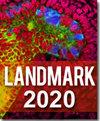年龄、心力衰竭和 ACE 抑制剂治疗对儿童血浆肾素活性的影响:系统回顾和欧洲 LENA 项目的启示
IF 3.1
4区 生物学
Q2 Immunology and Microbiology
引用次数: 0
摘要
背景:血浆肾素活性(PRA)已成为成人心力衰竭患者的预后指标。在儿童和心衰患儿中使用 PRA 作为有临床意义的参数,需要全面了解影响 PRA 的因素,以正确评估 PRA 水平。我们旨在评估年龄、心衰和血管紧张素转换酶抑制剂(ACEi)对儿童 PRA 水平的影响。方法:我们进行了系统性文献检索,以确定有关健康儿童和心衰儿童 PRA 水平的研究。此外,我们还分析了欧洲 "从新生儿到青少年的依那普利标签项目"(LENA)中心力衰竭儿童在依那普利治疗前(35 人,年龄为 25 天-2.1 岁)、治疗后 4 小时(34 人)和最初 8 天内(29 人)的 PRA 数据。结果:年龄对健康儿童的 PRA 水平有深远影响,因为文献中新生儿的 PRA 水平最高约为年龄较大儿童的 7 倍。在文献和 LENA 研究中,6 个月以下心衰患儿的 PRA 水平比健康儿童高 3-4 倍。在 LENA 研究中,ACEi 依那普利可显著提高心衰患儿用药前 PRA 的中位数,治疗 4.7 ± 1.6 天后提高 4.5 倍(n = 29,p < 0.01)。在使用依那普利治疗前,有症状心衰的 LENA 受试者(Ross 评分≥ 3)的 PRA 明显高于年龄相当的无症状心衰 LENA 受试者(Ross 评分≤ 2,P<0.05)。结论 :年龄、心力衰竭和 ACEi 治疗对 PRA 有显著影响,在评估 PRA 作为临床意义的参数时必须加以考虑。本文章由计算机程序翻译,如有差异,请以英文原文为准。
Influence of Age, Heart Failure and ACE Inhibitor Treatment on Plasma Renin Activity in Children: Insights from a Systematic Review and the European LENA Project
Background : Plasma renin activity (PRA) has gained relevance as prognostic marker in adults with heart failure. The use of PRA as a clinically meaningful parameter in children and children with heart failure requires a thorough knowledge of the factors that influence PRA to correctly assess PRA levels. We aim to evaluate the influence of age, heart failure and angiotensin-converting enzyme inhibitor (ACEi) on PRA levels in children. Methods : We conducted a systematic literature search to identify studies on PRA levels in healthy children and in children with heart failure. In addition, we analysed PRA data measured before (n = 35, aged 25 days–2.1 years), 4 hours after (n = 34) and within the first 8 days of enalapril treatment (n = 29) in children with heart failure from the European project Labeling of Enalapril from Neonates up to Adolescents (LENA). Results : Age has a profound effect on PRA levels in healthy children, as PRA levels in the literature are up to about 7 times higher in neonates than in older children. Children with heart failure younger than 6 months showed 3–4 times higher PRA levels than healthy peers in both the literature and the LENA studies. In the LENA studies, the ACEi enalapril significantly increased median predose PRA by a factor of 4.5 in children with heart failure after 4.7 ± 1.6 days of treatment (n = 29, p < 0.01). Prior to treatment with enalapril, LENA subjects with symptomatic heart failure (Ross score ≥ 3) had a significantly higher PRA than LENA subjects with asymptomatic heart failure of comparable age (Ross score ≤ 2, p < 0.05). Conclusions : Age, heart failure and ACEi treatment have a notable influence on PRA and must be considered when assessing PRA as a clinically meaningful parameter.
求助全文
通过发布文献求助,成功后即可免费获取论文全文。
去求助
来源期刊

Frontiers in Bioscience-Landmark
生物-生化与分子生物学
CiteScore
3.40
自引率
3.20%
发文量
301
审稿时长
3 months
期刊介绍:
FBL is an international peer-reviewed open access journal of biological and medical science. FBL publishes state of the art advances in any discipline in the area of biology and medicine, including biochemistry and molecular biology, parasitology, virology, immunology, epidemiology, microbiology, entomology, botany, agronomy, as well as basic medicine, preventive medicine, bioinformatics and other related topics.
 求助内容:
求助内容: 应助结果提醒方式:
应助结果提醒方式:


